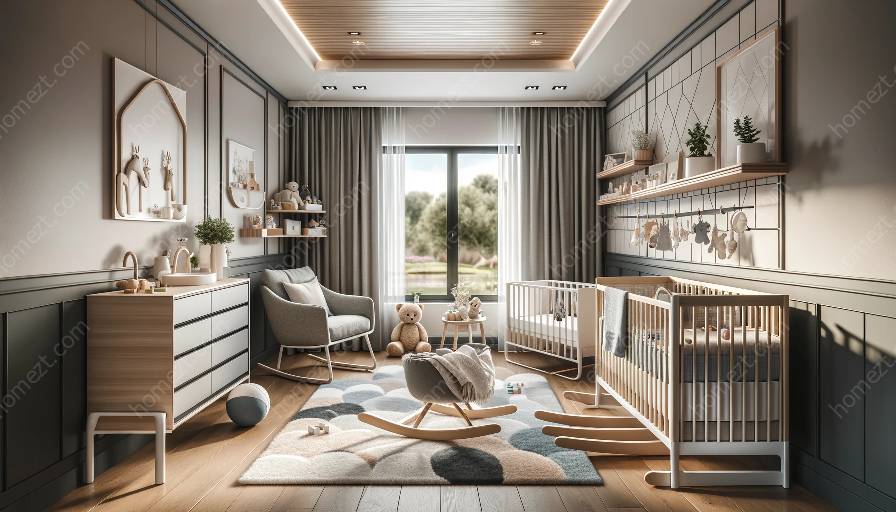Designing the perfect nursery involves a range of considerations, from furniture placement to creating a versatile space that can accommodate both nursery and playroom activities. Here's a comprehensive look at the key room layout considerations for a nursery and how they relate to furniture placement and functionality as a nursery and playroom.
Nursery Room Layout Considerations
When planning the layout of a nursery, several key considerations should be taken into account:
- Traffic flow: Ensure that there is a clear and unobstructed path from the doorway to essential areas, such as the crib, changing table, and storage units.
- Natural light: Maximize natural light by positioning the crib and play areas near windows without compromising safety.
- Storage: Incorporate adequate storage solutions to keep the nursery organized and clutter-free. Consider open shelving, bins, and baskets that are easily accessible and child-friendly.
- Furniture scale: Choose appropriately sized furniture that fits the room without overwhelming the space. Avoid overcrowding to maintain a sense of openness and comfort.
- Flexibility: Design the layout with flexibility in mind, allowing for easy adaptation as the child grows and their needs change.
- Zoning: Create clearly defined zones for different activities, such as sleeping, playing, and feeding, to optimize the functionality of the space.
Nursery Furniture Placement
The placement of furniture in a nursery plays a crucial role in establishing a functional and harmonious environment:
- Crib placement: Position the crib away from potential hazards such as windows, cords, and heating vents. Ensure that it's easily accessible from the door and not obstructing the traffic flow.
- Changing table location: Place the changing table near storage for diapers, wipes, and other essentials, with a clear path to the crib and any diaper disposal unit.
- Feeding and rocking area: Create a cozy corner for feeding and rocking, featuring a comfortable chair or glider located near a small side table for convenience.
- Play area organization: Arrange play furniture, such as toy storage and activity mats, to encourage exploration and creativity while maintaining a sense of order.
- Safety considerations: Ensure that all furniture is secured to the wall to prevent tipping and consider softening sharp corners with cushioned edge guards.
Nursery & Playroom Functionality
Integrating nursery and playroom functionalities can enhance the space's versatility and longevity:
- Convertible furniture: Consider multi-functional furniture pieces, such as cribs that convert into toddler beds, to accommodate the changing needs of the child as they grow.
- Interactive storage: Select storage solutions that can double as play surfaces, such as low bookshelves or storage benches with cushioned tops for seating and play.
- Learning areas: Incorporate age-appropriate learning and play stations, allowing the nursery to evolve into a dedicated playroom as the child gets older.
- Organization systems: Implement versatile organizational systems that can adapt to the evolving needs of both a nursery and playroom, catering to different types of toys and activities.
- Sensory elements: Infuse the space with sensory-rich elements, such as colorful artwork, soft textiles, and age-appropriate toys, to stimulate the child's development and play experiences.


